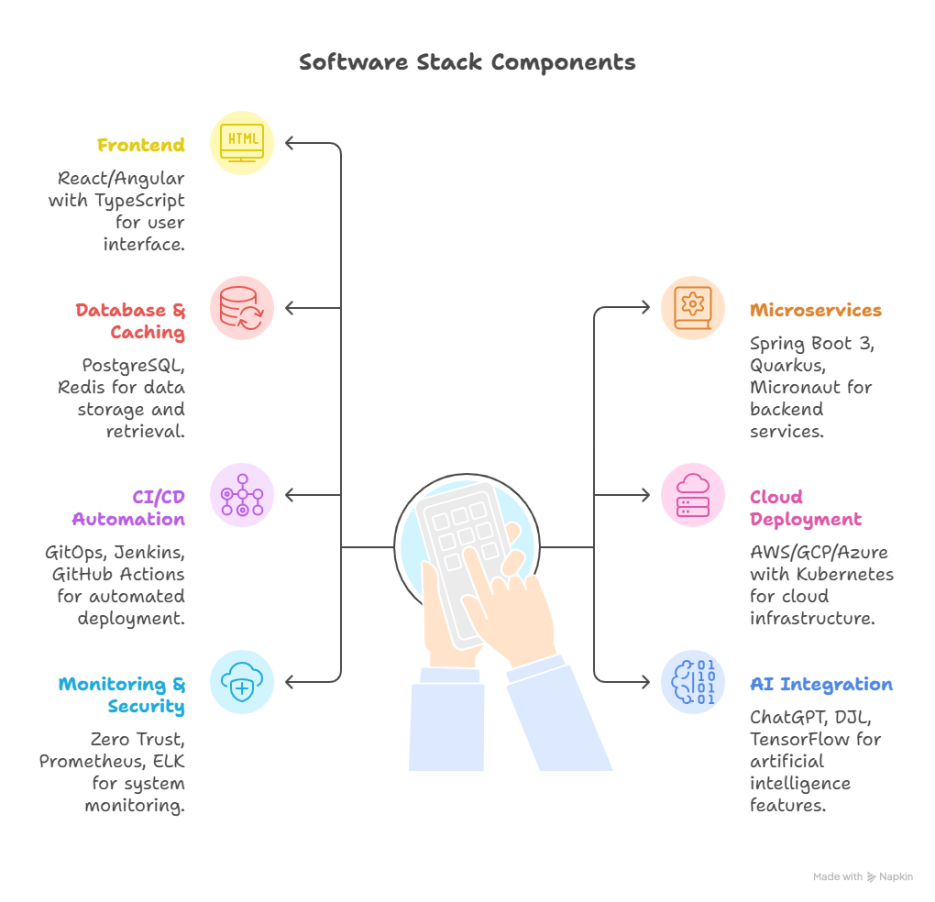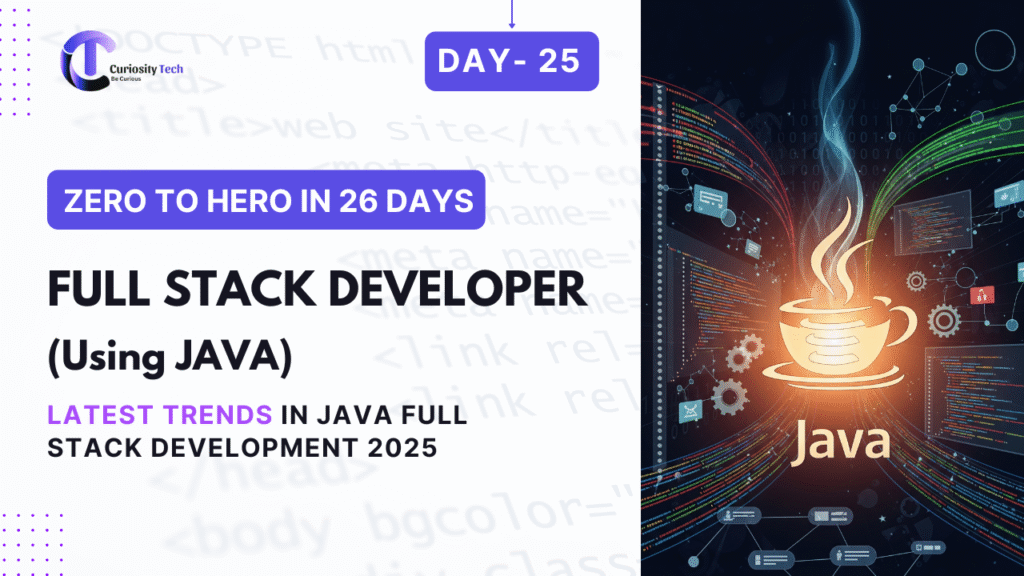Introduction
The Java Full Stack landscape is evolving rapidly, driven by emerging technologies, frameworks, and user expectations. Staying updated with the latest trends is essential for developers who want to remain competitive, efficient, and innovative.
At CuriosityTech.in, developers are trained to not only master core Java full stack skills but also embrace emerging trends, preparing them for the next era of application development.
Why Staying Updated Matters
- Industry Relevance: Employers seek developers familiar with modern tools and frameworks.
- Enhanced Productivity: Modern tools simplify development and reduce boilerplate work.
- Better Performance & Security: New technologies often offer performance improvements and built-in security features.
- Future-Proof Career: Staying ahead of trends ensures long-term employability.
CuriosityTech.in emphasizes hands-on learning with the latest frameworks, tools, and technologies, giving learners a competitive edge.
Step 1: Emerging Java Frameworks & Libraries
- Spring Boot 3 & Spring Native:
- Faster startup times, reduced memory footprint, and native image compilation.
- Supports microservices and cloud-native deployments efficiently.
- Quarkus:
- A lightweight, Kubernetes-ready Java framework for building cloud-native apps.
- Optimized for containerized environments, offering instant reload and minimal memory usage.
- Micronaut:
- Modern JVM framework focusing on dependency injection, AOT compilation, and fast startup.
- Ideal for microservices and serverless applications.
Step 2: Frontend & Full Stack Trends
- React 20+ & Angular Ivy:
- React keeps evolving with features like Server Components, Concurrent Rendering, and improved performance.
- Angular Ivy engine enables smaller bundles and faster compilation.
- TypeScript Everywhere:
- Adoption of TypeScript is growing for strongly typed JavaScript in large-scale projects.
- Enhances maintainability and reduces runtime errors.
- WebAssembly (WASM):
- Java Full Stack developers can now run Java code in the browser using WASM.
- Opens possibilities for high-performance web apps.
Step 3: Cloud & DevOps Integration
- Cloud-Native Java Apps:
- Microservices deployed on AWS, Azure, GCP, or Kubernetes clusters.
- Auto-scaling, monitoring, and serverless architectures become standard.
- CI/CD with GitOps:
- Automating deployments using Git as the single source of truth.
- Integrates well with Jenkins, GitHub Actions, and ArgoCD for continuous delivery.
- Containerization & Orchestration:
- Docker and Kubernetes dominate deployment pipelines for full stack apps.
- Promotes scalability, portability, and microservices architecture.
Step 4: AI & Machine Learning Integration
- AI-Powered Features in Java Apps:
- Intelligent recommendation systems, automated customer support, and predictive analytics.
- Java libraries like Deep Java Library (DJL) and TensorFlow Java make integration seamless.
- ChatGPT & Conversational AI:
- Full stack applications now embed AI chatbots to enhance user experience.
- Developers integrate AI services via APIs and microservices.
Step 5: Performance & Security Trends
- Reactive Programming (Spring WebFlux, Project Reactor):
- Handles high-concurrency scenarios with non-blocking I/O.
- Ideal for chat apps, streaming, and large-scale APIs.
- Zero Trust Security & OAuth2/JWT:
- Modern applications adopt zero trust principles for secure authentication.
- JWT and OAuth2 integration ensures secure APIs and microservices.
Step 6: Trend Adoption Workflow Diagram

Description:
This workflow demonstrates a modern Java Full Stack ecosystem, integrating cloud-native microservices, reactive programming, AI features, and security best practices.
Step 7: Best Practices for 2025
- Adopt cloud-native frameworks and microservices architecture.
- Embrace reactive programming for scalability and performance.
- Use TypeScript with frontend frameworks for maintainability.
- Integrate AI/ML capabilities to enhance user experiences.
- Continuously monitor, secure, and optimize applications.
Integrating CuriosityTech Perspective
At CuriosityTech.in, learners gain hands-on experience with the latest frameworks and technologies, including Spring Boot 3, Quarkus, WebFlux, cloud-native deployment, AI integration, and modern CI/CD workflows. This prepares developers to build cutting-edge applications aligned with 2025 industry standards.
Conclusion
Staying updated with Java Full Stack trends ensures that developers remain competitive and future-ready. From cloud-native architectures to AI integration, reactive programming, and advanced frontend frameworks, the next era of development demands adaptable, skilled developers. CuriosityTech.in equips learners with practical expertise in these emerging trends, preparing them to lead in the full stack domain.



